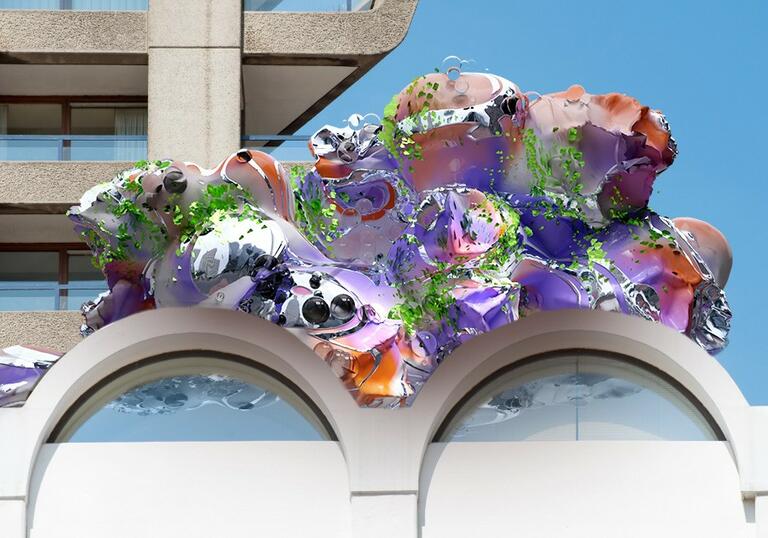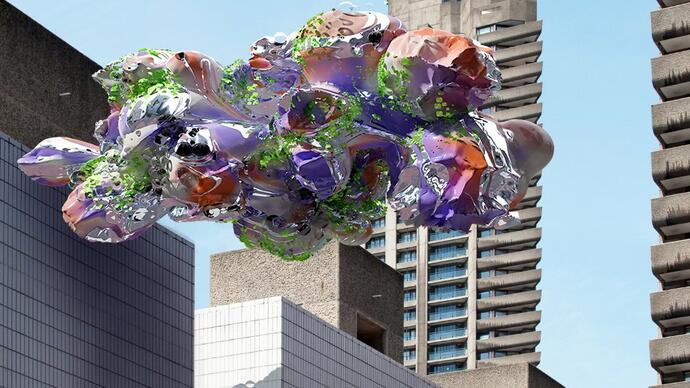Each year, the legendary Unsound festival of experimental music adopts a theme, to reflect ongoing concerns and sensibilities, launching in its home city of Kraków, Poland before spinning off different versions across the globe.
When Unsound last visited the UK, at the Barbican in 2017, the line-up was a selection from the 2016 festival theme of Dislocation, partly inspired by a three-year project across nine former Soviet countries (including Russia, Belarus and Ukraine) and by Brexit, which would interrupt the inter-connected flow and fabric of Unsound’s pan-continental approach. The dislocation of Covid only made matters worse, forcing Unsound online in 2020, as well as a book and an album published at the start of 2021.
Unsound bounced back in real life in 2022 with the more playful theme of Bubbles, celebrating the abundance of what co-founder and artistic director Mat Schulz describes as the festival’s, ‘amorphous, shifting energy,’ in its 20th year of operation. Unsound’s new Barbican event has selected three performances from last year’s Kraków festival that exemplify Unsound’s questing spirit, disrespect for musical and geographical boundaries and a belief in collaboration, finding common ground between artists or perhaps fascinating contrast and conflict.
Introducing the show are Copenhagen-based sound artist Sofie Birch and Polish vocalist Antonina Nowacka, revisiting their recent collaborative album Languoria. The artists first met at Unsound’s sister festival Ephemera in Warsaw, when Schulz suggested that they team up, leading to a spontaneous performance and the subsequent album, which Unsound’s in-house label co-released in 2022, an exquisite meeting point between Birch’s, ‘soft ambient,’ compositions - ‘encouraging its listeners to dream and dwell,’ she says - and Nowacka’s abstract vocalisations.
‘Sofie and Antonina are very collaborative artists to begin with,’ says Schulz, ‘and there was a real spark between them. Something about the otherworldly nature of Antonina’s voice seamlessly weaves its way through Sofie’s soundscapes. Live, they wear special costumes in a specially designed set (by the Ukrainian artist Planeta) that looks almost mythical, like they have stepped out of a forest in a fairy tale.’
They are followed on stage by the Australian artist Robin Fox, whose work resides at the cutting edge of digital sound and vision. He describes his new work Triptych as an ‘audio-visual space-time carving,’ using laser projectors to transform the Hall's unique architecture into a completely new environment.
Says Schulz, ‘This is Robin’s third premier with Unsound, and they’ve all involved lasers: in a sense, it’s his instrument. Ironically, Robin admits he started using lasers to engage the audience in his experimental music, but his synthesis between sound and vision is incredible. I’d say this new piece is more rhythmical than Robin’s previous work; I can even see parts of it working in a club environment, or at least an open-minded club, as there are also elements of abrasive noise.’
Finishing the show are Osmium, a pan-global experimental supergroup, which doesn’t happen every day (but possibly more often than finding osmium, one of the rarest metallic elements on earth). Unsound already had lengthy relationships with Icelandic Oscar-winning composer and cellist Hildur Guðnadóttir from Iceland, British GRAMMY-winning sound designer/producer Sam Slater and British electronic scene veteran James Ginzburg, who decided to form a new trio working with custom-made instruments with robotic elements; Osmium became a quartet when Schulz suggested they include Indonesian vocalist Rully Shabara, ‘to add another layer to the show,’ he says.
Also known as one half of Senyawa, Shabara’s extraordinary expressionistic approach ramps up Osmium’s techno-organic drama, ‘picking up sounds from the feedbacking robots, and creating new rhythms out of those,’ says Slater.
The trio of performances may seem separate in their sound and aesthetics, but Schulz sees a connection between them. ‘At Kraków last year,’ he says, ‘Osmium has a ritualistic, almost trance-inducing quality, which worked really well following Robin’s show. And Sofie and Antonina also make sense as a floating introduction to the evening; all three have an immersive quality. I’m thinking about the journey for the audience, and they all embody something of Unsound.’
Fully operational again, but aware of how global events remain dislocated and fractured, Unsound’s theme for 2023 is Dada, referencing the early 20th century art movement that, ‘rejected ideas of progress, logic and rationality in favour of nonsense, outrage and radicalism,’ says Schulz, who will be replaced this year by an ‘AI artistic director’, or AIAD. ‘This is not really about looking, or listening, backwards to the past for clues,’ Schulz concludes. ‘We want to think about Dada in the present, and with an ear to the future, in which non-human agency is increasingly prevalent. AIAD is part of this – an absurdist provocation, rather than a techno-utopian statement.’


